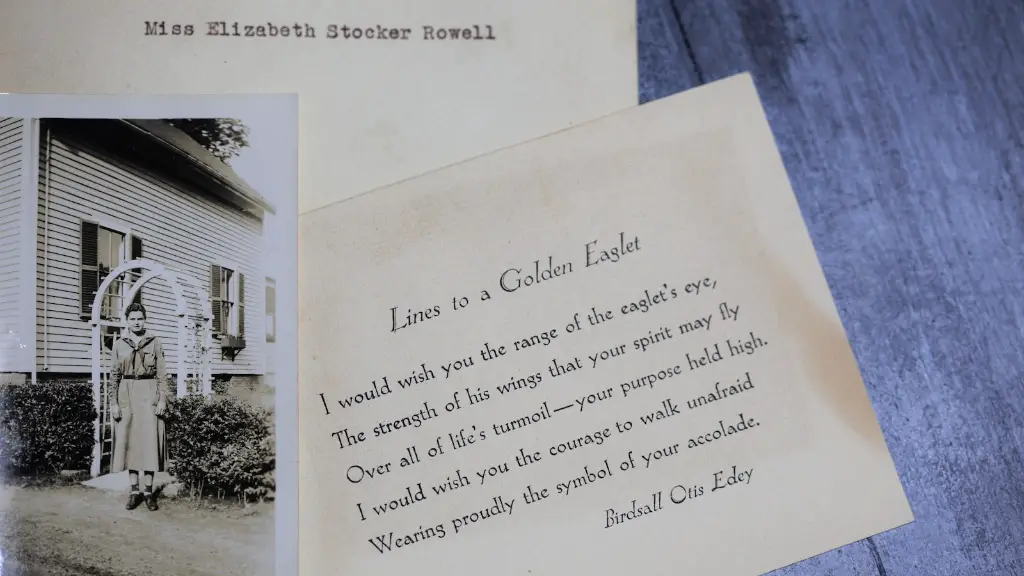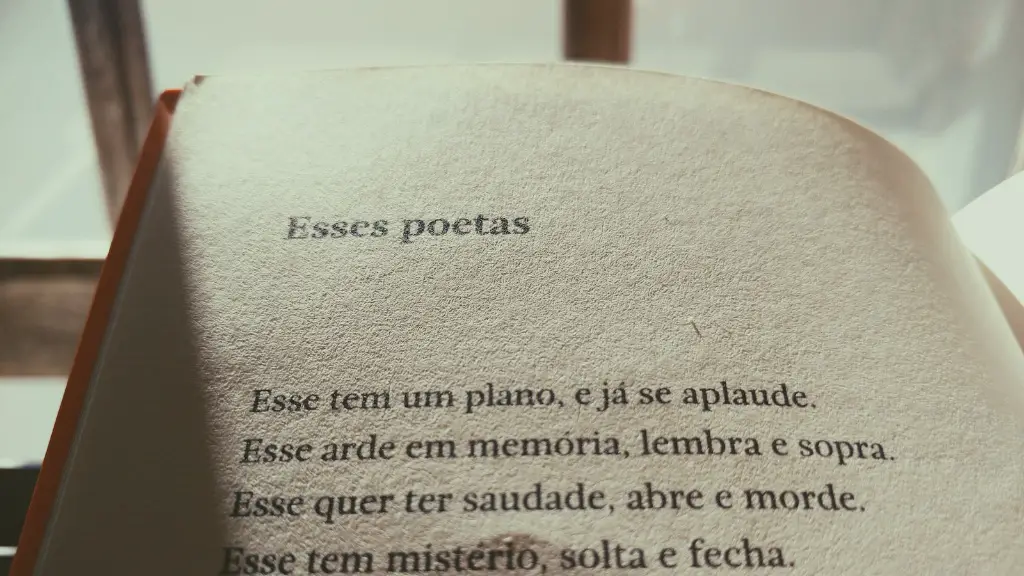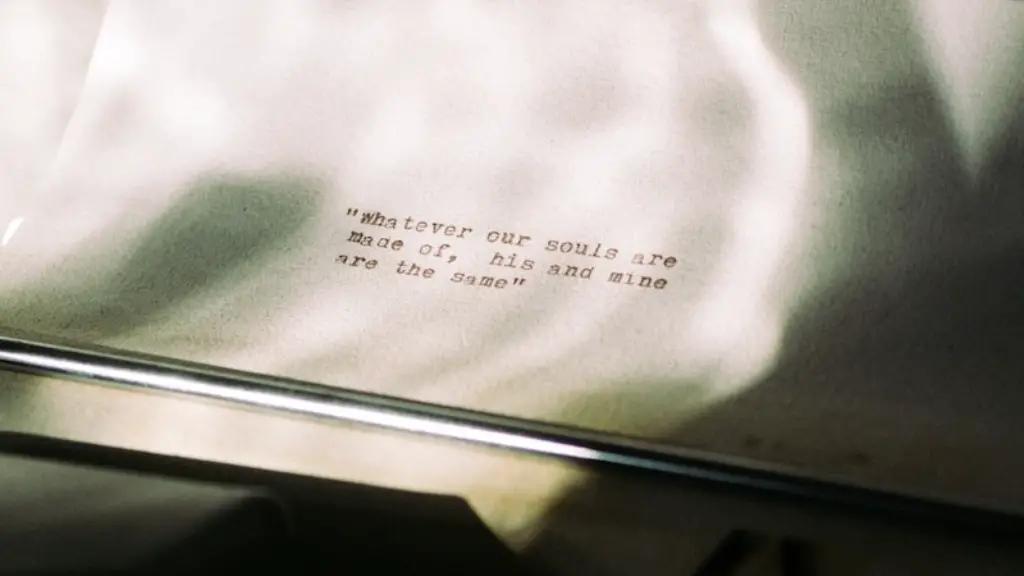Spoken word poetry is a form of creative expression that has been gaining momentum in the performing arts world. It is a combination of poetry, usually written, and often performed in the oral tradition. Spoken word poetry has been around since ancient times but has gained more attention in recent years due to its unique combination of lyrical prowess, storytelling and passionate delivery.
The art of spoken word poetry is to perform a piece with a strong emotion and intensity, to captivate an audience with vivid imagery and physicality, as well as to challenge the listener by introducing characters, voices, and perspectives. It is to create an experience more than simply to communicate a message.
The first place many people hear spoken word poetry is in the classroom. Teachers often introduce the genre to their students when discussing the written word. The approach taken by teachers varies, from the dramatic and big-star recitations of the classics, to open mics where students share their own written work and express themselves.
Spoken word poetry is often performed in open mic settings at venues such as coffee shops and theatres. These settings provide poets an opportunity to share their work and connect with their community. It is a great outlet for artists to express themselves while also giving back to their community. Additionally, poetry slams are competitive poetry readings in which poets compete against each other in a timed format, with topics ranging from social justice to personal experiences. These events provide poets with a platform to showcase their creativity and draw attention to their work.
The importance of spoken word poetry lies in its connective power. It is a medium that speaks to the heart and soul of the audience, propelling the listener by creating an intimate dialogue. It is a way for the individual to share stories, ideas, and perspectives in a powerful and emotionally resonant way. The most effective poems tell a story, evoke emotions, and leave the listener moved.
Performing Spoken Word Poetry
Performing spoken word poetry requires practice and preparation. Poets should strive to perfect their delivery and make sure their performance is cohesive and flows naturally. They should focus on their body language, voice inflection, volume, and speed. It is important to experiment with different styles and tones to find what works best in different settings. Improvisation and memorization can also be helpful tools in honing the performance.
When preparing, it is important to select the right material. The message should be tailored to the audience. Rehearsing the piece in front of others is a good practice to ensure the poem flows naturally for the delivery. Poets should be sure to avoid speaking too quickly or mumbling, and practice controlling the volume of their voices. The poet must also ensure the audience knows when to applaud.
Structure and Devices
The structure of spoken word poetry really depends on preference. Generally, it is written in single stanzas and does not follow a consistent rhyme scheme or fixed line length. However, there are some elements of traditional poetry that are commonly seen in spoken word pieces, such as rhyme, repetition, and metaphor. In addition, poets may choose to use devices such as alliteration and onomatopoeia. The aim is to create a piece that speaks to the audience.
Syllable counts are also important when constructing a poem. Controlling the length of lines and the number of syllables allows the poet to provide a consistent delivery. This will also help maintain the poem’s performance-level pacing.
Finally, intonation and delivery play a major role in spoken word poetry. It is important to practice speaking with emotion and energy, rather than reading the poem in a monotone. Experimenting with cadence and volume can help make the poem more effective.
Poetic License
Spoken word poetry does not need to follow the traditional rules of poetry. Poets can break the mold and be creative. Prose, rap, and storytelling elements can all be used to create a unique piece. The freedom to choose creative elements is part of the beauty of the art form.
In spoken word poetry, images and metaphors are important tools. It is also important to be clear and succinct, while still conveying emotions and messages. To inject humor and lightness into a piece, there is nothing wrong with bringing in comedic elements to break up the intensity.
The poet should also experiment with different delivery styles, such as incorporating free verse, rhythm, and freestyle. This will help to add variation to the delivery and make the poem stand out. The combination of different elements will help create an engaging performance.
Creating a Lasting Impression
When performing, it is important for the poet to capture the attention of the audience. This can be done by creating an atmosphere through diction, creative visuals, powerful delivery, and facial expressions. To ensure a lasting impact, the poem should rise and fall in intensity, providing an organic flow that allows the audience to take a journey with the poem.
The use of pauses can also be effective. In addition to evoking emotions and creating suspense, pauses can be used to give the audience time to absorb the poem’s message. By delivering the poem with thoughtful pauses and meaningful words, the poem will leave a lasting impression on the audience.
Finally, it is important to have a clear ending. The poem should come to a point where the audience feels satisfied and has been moved by the experience. Endings do not need to be definitive, but they should be powerful.
Performance and Presentation
To ensure the best performance, it is important for the poet to create a mental image of the audience and mentally “connect” with them. This will help the poet deliver the poem with the right emotion, at the right time. It is important to practice the poem until it is second nature.
Another key to a successful performance is the poet’s physical presence. The poet should be mindful of the behavior they present. Good posture, eye contact and hand gestures can all help to maintain the audience’s focus and create a captivating experience.
Finally, proper presentation is important to create a professional looking performance. For example, the poet should choose proper attire that reflects the tone of the piece and suits the setting. This will help to create an image that the audience will remember, making it easier for the poet to gain fans and get their work recognized.
Engaging the Audience
A successful spoken word poet will be able to engage the audience and build a connection with them. It is important for the poet to connect with the audience emotionally and to tell stories that resonate. It is also important to be bold and take risks. It is important to never be afraid to speak one’s truth and express one’s opinions.
It is also important to interact with the audience. Chatting before and after the poem can help to create a more intimate experience. The audience will be more likely to connect with the poet if they feel they have gotten to know them.
Poets should also have an understanding of the audience’s reaction. Knowing how to read the audience’s reaction can help the poet to adjust their performance accordingly. This can help to ensure the audience is engaged throughout the poem and that they are moved by the message.
Building a Platform
Once the initial performance has been made, a poet should consider how to continue to make a name for themselves. Networking is key in the performance world. It is important for poets to build relationships with their peers and gain recognition in their local community. This can be done through social media and open mic events.
It is also important for poets to develop their personal brand. Writing blogs, creating videos, and posting on social media can all help spread the poet’s message and build a fan base. This can be beneficial for gaining recognition and will help the poet to stand out from the crowd.
Finally, poets should be sure to document their performances. Recording and photographing their performances can help to create content that can be shared and help market their work.





